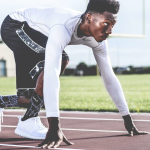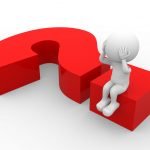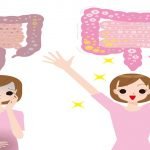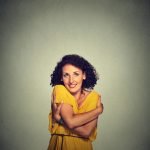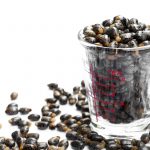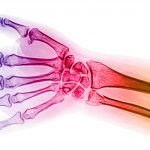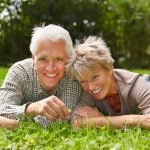Exercise for the Aging Set
Exercise for the Aging Set
The status quo of anti-aging therapies in America seems to stress intervention in appearance rather than in function. A new haircut, reshaped eye brows, Botox injections, liposuction, a face lift and dental veneers may make a person feel better about how they look, but do little in terms of maintaining or promoting true health. As NDs, we know that promoting true health is a holistic process, encompassing spiritual, mental, emotional and physical aspects.
Naturopathic medicine has always included daily exercise as a component of health, no matter how young or old the person may be. In my own life, my spiral toward ill health was stopped initially with the help of aerobic exercise. Then my exercise goals were assisted by positive changes in my diet and lifestyle habits. These changes, in turn, fostered healthier function of my nervous, cardiovascular, musculoskeletal and endocrine systems. There is no drug or surgical technique that has the restorative power that exercise has.
Regaining Coordination and Stability
As people age, one of the most obvious functional changes is loss of balance. An elderly person is perceived as “frail” by his or her slow and deliberate gait. Loss of balance and coordination has contributed to increased risk of falls, fractures, loss of autonomy and early mortality. The fear of losing one’s balance is often what keeps the elderly from tackling this problem head on; thus, many people may retreat to the safety of their couch, which only leads to further deterioration. Ironically, to regain lost coordination and stability, people need to add instability to their workouts.
Taking it slowly with patients is important. Since many people have lost lean muscle mass, first I demonstrate a few key upper-body exercises with very light free weights that patients can start at home. Having strong leg muscles is important to achieving the goal of increased function, so I also suggest they purchase ankle weights for leg lifts. The third step involves balance. For performing leg lifts, I advise patients to hold one hand on a table or countertop, and then lift one leg. Once they have established balance, they should remove their hand from the table. I ask them to work up to standing freely for 60 seconds on each leg.
When these tasks become too easy, the patient is ready to move on to the use of instability tools, such as balance domes or balance discs. You may think they are only useful for perfecting the elite athlete’s performance. However, I have witnessed remarkable balance improvement in many of my elderly “workout buddies” using this equipment at the local gym. For example, Billy, a 74–year-old role model on the balance dome, can jump from dome to dome, catching and throwing a ball without missing a beat. This is a man who just three years earlier could not stand on one leg to put his pants on without falling over.
Advise patients to start slowly with a balance dome or disc, placing it near a wall or railing that they can hold onto until they have established a sense of balance. Once they can stand freely on the surface with both feet for 60 seconds, they can move the dome away from the wall and practice stepping on and off in various directions. To practice standing on the balance disc or dome with one foot, they may want to return to the wall until they have safely mastered that maneuver.
Exercises aimed at retraining or rehabilitating a person’s vestibulospinal tract should be done on a regular basis, usually four to five times per week. If the patient is plagued by motion-provoked vertigo, light headedness and unsteadiness, they may need to do “habituation exercises.” These exercises provoke vestibular symptoms in order to take advantage of physiological fatigue of the neurovegetative response to repetitive movement, and reduce the symptoms. Perhaps this is why social dancing seems to help many older individuals with their balance.
Since 2001, Billy has been a participant in an epidemiological study concerning osteoporosis in older men. At that time (at the age of 68), his weight was 186 pounds and his right hip bone mineral density (BMD) was 0.977g/cm², with a Z-score of -0.17. (The Z-score is the number of standard deviations below the average for a healthy person of the same age, race and gender.) The investigating doctors provided no guidance for increasing his bone density; their intent was to observe, not to intervene. Billy faithfully worked out four days a week, lifting weights, riding a stationary bicycle and training on balance domes. In 2005 (at the age of 72), his weight remained 186 pounds and his right hip BMD had increased to 1.030g/cm², with a Z score of +0.27.
Other Sports, Activities
Another sport seldom mentioned when discussing exercise for the older individual is rowing. According to Sandra McCarthy, a rowing instructor, “rowing is the fastest growing master’s sport.” The teamwork involved provides a huge positive mental stimulus that keeps the mind young as well as the body. Rowing uses more muscle groups than most forms of aerobic exercise (legs, back, arms, chest, core), which equals a greater calorie burn. Compared to other sports, rowing puts the joints (particularly the hips, ankles and knees) through a larger range of motion without high impact. Rowing also has the resistance benefit similar to weight lifting, which equals greater bone density. And lastly, if one is actually rowing a boat in water (vs. using a machine), there is a large amount of coordination involved in doing the strokes properly. Rowing is a great builder of proprioception because of the balance issues in a boat.
Other disciplines, such as yoga and Tai Chi, also challenge the body’s proprioceptive responses. The slow, focused movements of Tai Chi provide an environment whereby the proprioceptive information being fed back to the brain stimulates an intense, dynamic “listening environment” to further enhance mind/body integration. Closing the eyes during any type of balance training increases the challenge, and should be done with great care.
Nutrients
Regarding nutrients to assist people in regaining function and coordination, my short list would include: N-acetyl cysteine or glutathione (antioxidants that have proven to be protective to the cells of the vestibular apparatus); whey protein isolate or L-glutamine (amino acids for muscle building and repair); B-complex vitamins and fish oil (for proper nerve function); and calcium and magnesium (for proper muscle function).
Richard Winett, PhD, a professor of psychology at Virginia Polytechnic Institute, has written about key psychological elements of older athletes, or “ageless athletes.” These may prove valuable to help inspire patients to get active. Setting goals, both long-term and short-term, is important. The goals should be challenging, but reachable. Success in meeting initial goals raises a person’s self-esteem.
The person needs to focus on achieving their goals. One way to assist patients is by arranging a supportive environment. For some people, this means finding an exercise buddy, joining a class at the local gym or purchasing equipment for a home exercise room. Scheduling time to exercise or train is important, even for the retired set. It is easy for something to pop up and replace a necessary workout.
Winett found it refreshing that many older athletes did not take themselves too seriously. Competition becomes less important as athletes age, and they are able to relax and still have an effective workout. I have come to appreciate the laughter and camaraderie that I feel in my supportive environment; it is one element that keeps me dedicated and focused on my fitness goals.
So how does a person move from “frail” to “fit”? In the words of 92-year-old fitness guru, Jack La Lanne: “Life should be a happy adventure, and to be happy you need to be healthy. Just take things one step at a time, and remember that everything you do takes energy to achieve. You need to plant the seeds and cultivate them well. Then you will reap the bountiful harvest of health and longevity!”
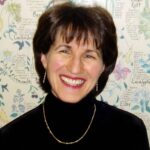 Helen C. Healy, ND is a 1983 graduate of NCNM. After completing a coast-to-coast bicycle ride, she settled in St. Paul, Minn., where she practices at Wellspring Naturopathic Clinic. As past president of the Minnesota Association of Naturopathic Physicians, she has been involved in the decades-long endeavor to educate the public about naturopathic medicine and to obtain licensure for qualified NDs. She teaches herbology at the College of St. Catherine for its masters in holistic health program. Helen keeps the stress hormones down and a smile on her face by scheduling every Tuesday and Thursday morning for an assortment of exercises at her local gym.
Helen C. Healy, ND is a 1983 graduate of NCNM. After completing a coast-to-coast bicycle ride, she settled in St. Paul, Minn., where she practices at Wellspring Naturopathic Clinic. As past president of the Minnesota Association of Naturopathic Physicians, she has been involved in the decades-long endeavor to educate the public about naturopathic medicine and to obtain licensure for qualified NDs. She teaches herbology at the College of St. Catherine for its masters in holistic health program. Helen keeps the stress hormones down and a smile on her face by scheduling every Tuesday and Thursday morning for an assortment of exercises at her local gym.




